Text
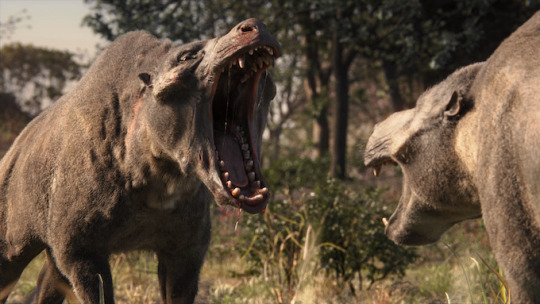
In case you haven't seen it yet, FORGOTTEN BLOODLINES has a Kickstarter now! I seriously recommend backing it!
Agate needs all the support it can get! It is the chance to show the world what a paleo documentary entirely produced by paleo people can look like!
We love to complain all the time about the state of paleo-media, this could help with changing it for the better!
(also it's voiced by NIGEL MARVEN)
kickstarter
Here the Kickstarter and trailer for the project!
Also: the coming Saturday we will have a special FB stream on Twitch, talking about the project and producing little sketches for people who backed the project ;)
970 notes
·
View notes
Text
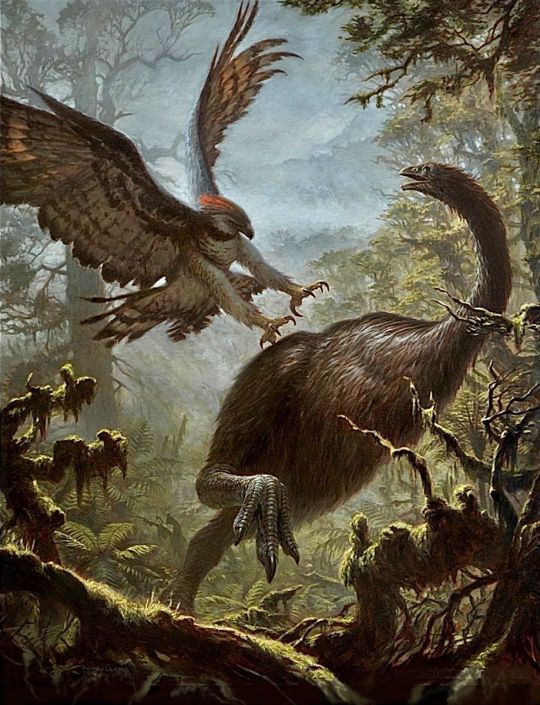
Haast's eagle and moa
The eagle comes not as a club, but as a fork—not slamming, but gripping and pulling the big bird upon impact. It cannot lift the moa, but it can unbalance it, clutching the flesh under the shaggy hide and sweeping its wings to pull the bird this way and that until both fall. The eagle is fast. It leaps from the falling moa so as not to be crushed, then dives in, striking with its beak, tearing a hole in the moa's gut, letting loose intestines and offal. Then it flaps up to a tree and watches. There's no need to do anything more than wait as the moa swamps the forest floor with its blood, whistling final cries, breathing final breaths. When the moa's heart stills, the eagle waits another minute to ensure it doesn't get kicked by a cadaveric spasm. Cold patience is the eagle's sharpest honed weapon.
302 notes
·
View notes
Text
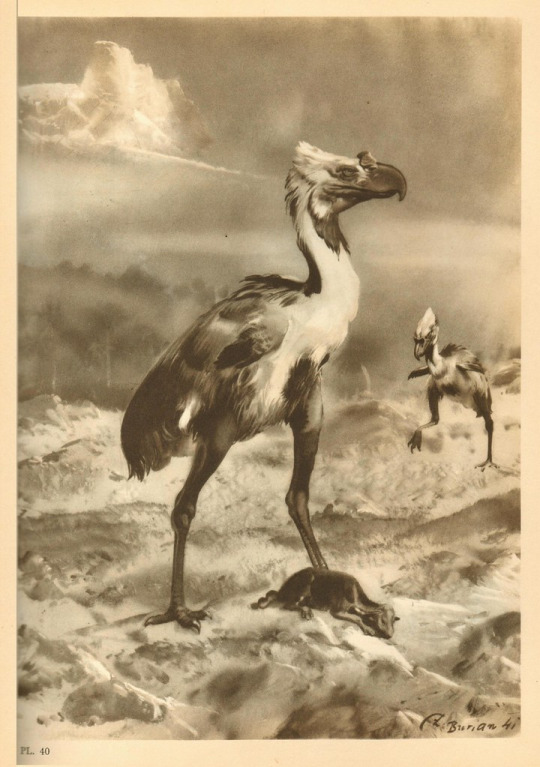
Diatryma. Zdeněk Burian.
via
543 notes
·
View notes
Photo
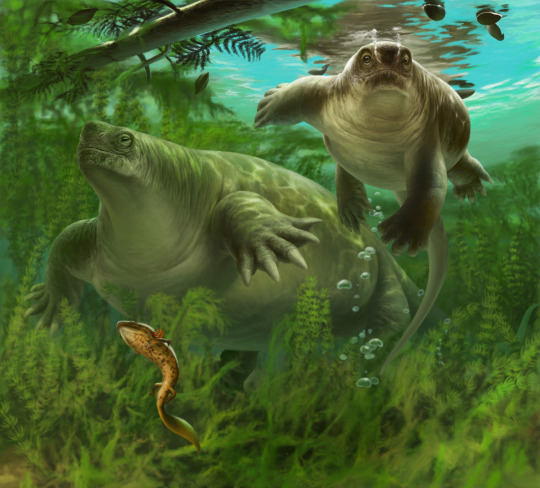
Permian Synapsid Had Hippopotamus-Like Semi-Aquatic Lifestyle
https://www.sci.news/paleontology/lalieudorhynchus-gandi-11065.html
311 notes
·
View notes
Text
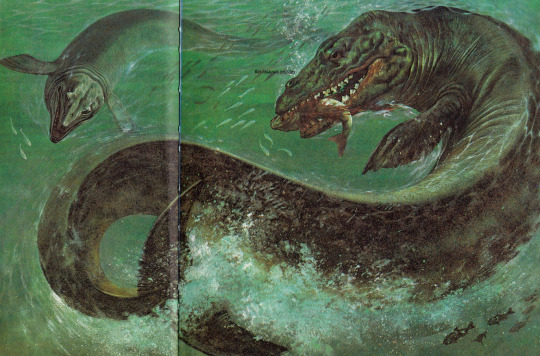
Piero Cozzaglio, 1982. From The Prehistoric World.
source
186 notes
·
View notes
Photo

Jaggedhead gurnard (Gargariscus, Armored searobins or armored gurnards)
Photographer and Fisherman: Roman Fedortsov
37K notes
·
View notes
Photo


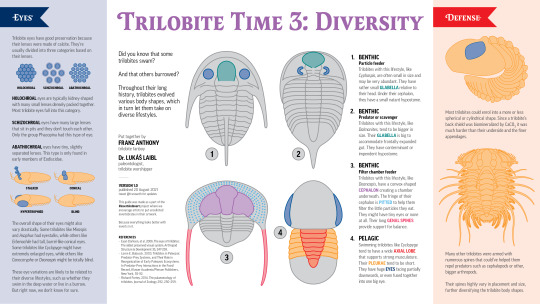


Welcome to Trilobite Time – come on grab your friends, we’ll go to the very distant past.
I teamed up with @lukas_laibl to produce a series of drawing guides about trilobites so you too, can #InsertAnInvert into your artwork with confidence.
—
#InsertAnInvert is a series of invertebrate drawing guides done in collaboration with actual experts (like, literal Dr. Crabs and Dr. Cephalopods and all that) so if you could give them a follow on twitter that’d be swell.
High-res PDFs available for free on my rarely updated Patreon. Absolutely no money required. I just think Patreon is useful for attaching PDFs.
279 notes
·
View notes
Text
I want a dinosaur documentary series that has an episode called “T.rex has a nice day,” where instead of the standard Dino doc late cretaceous stuff (life or death fight with armored herbivore followed by death via apocalyptic meteor), the T.rex just has a nice day. Wakes up, eats the carcass of yesterday’s kill, goes on a walk through their territory, drinks from a steam, walks some more, goes back to the kill for dinner, sleeps. Just a pleasant day for T.rex.
5K notes
·
View notes
Photo
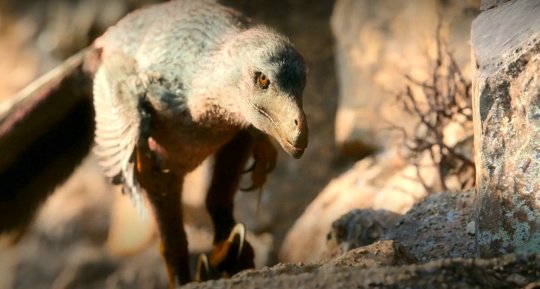



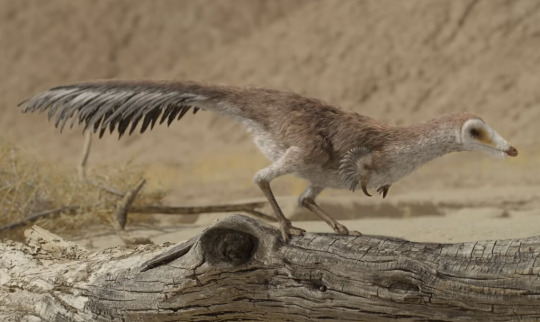

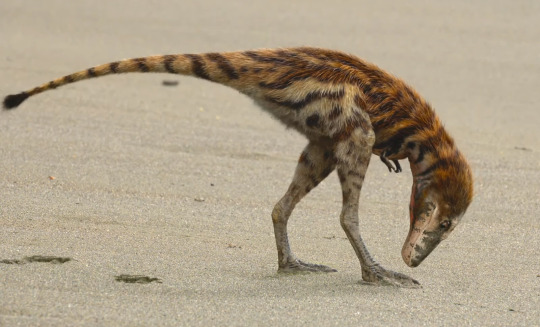

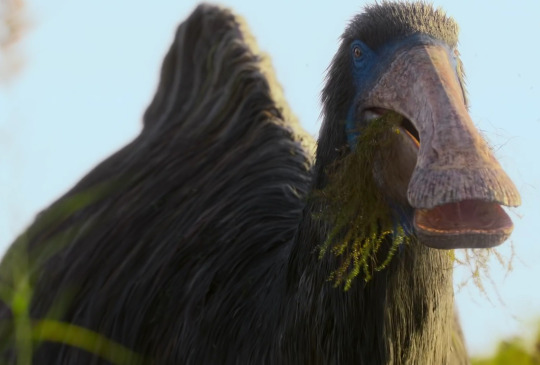
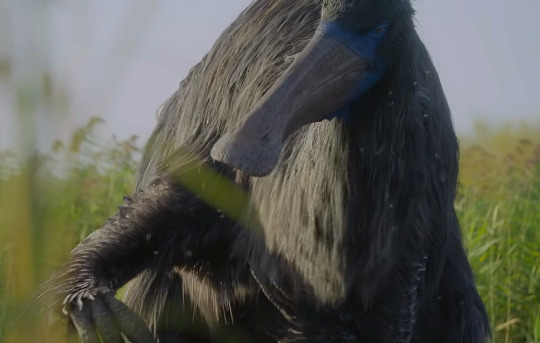
I can’t believe we’re being blessed with Prehistoric Planet as a real documentary style series and it’s coming out tomorrow. Bless every single person who worked on this project.
Prehistoric Planet goes live for a 5 day event on May 23rd on Apple TV+
#reblog#documentaries#prehistoric planet#dinosaurs#feathered dinosaurs#velociraptor#mononykus#archelon#tyrannosaurus rex#deinocheirus
2K notes
·
View notes
Video
A 12 million year old crab was hiding in this rock
77K notes
·
View notes
Text
ANOTHER TRAILER ARE YOU KIDDING ME!?!?!?! AAAAAAAAAAAAAAAAAAAAA!!!!!!!! YES YES YES YES YES YES!!!
918 notes
·
View notes
Text
youtube
oh my GOD
838 notes
·
View notes
Note
I know this image is just an artistic rendering, but was Chicxulub even close to being that big?
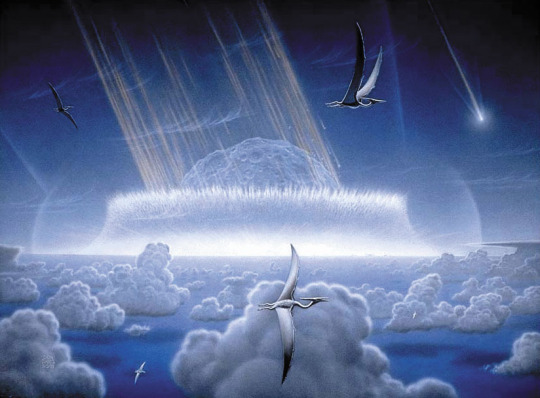
YES, ABSOLUTELY. if anything, that paleoart UNDERSTATES it!
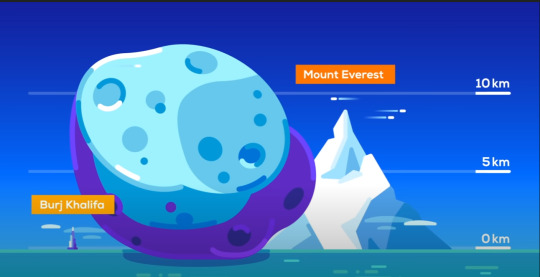
the Chicxulub Impactor was about six miles wide, meaning that when its bottom edge slammed into the atlantic ocean at roughly 20 km/s, its top edge was still in the upper atmosphere.
(infographic cadged from Kurzgesagt)
51K notes
·
View notes
Text
Tuesday 7/12/21 - Where are all the medium sized Theropods?

"The Horrors of Thieving", Allosaurus, Ornitholestes; FredtheDinosaurman (deviantart)
Ecosystems these days are made up of animals and plants of varying sizes and niches. Niche partitioning is a term used to describe how different roles in an ecosystem are taken up by different species. Carnivores for example, can be suited to a variety of roles, even within the same biological family.
Think of North American canines for example. Red Foxes are a smaller predator, hunting rodents, small birds etc. Then there's Coyotes who hunt those smaller prey too, but also hunt larger animals like beavers, and porcupines, and even pack hunt for animals like deer. Then there's Wolves, which may opportunistically scavenge, but are specialised in larger prey as a pack, like bison. Just like prey, predators can inhabit a small size, medium size, or large size niche. But this divide was long-thought to be seemingly absent in dinosaurs.

Red Fox (smallest), Coyote (middle), Grey Wolf (largest), National Parks Service
Ok so when you think of the size of a meat-eating dinosaur, you either think of a large apex predator like Tyrannosaurus or a smaller agile hunter like a Velociraptor. Late Mesozoic Theropods are consistently either huge, or man sized, and palaeontologists were puzzled as to why there were so few species in the middle. There were small, medium, and large prey animals in the age of reptiles, so why was there no medium sized theropods to fill in that niche?
Recently, there has been a revision on how we understand the growth and diet of predatory dinosaurs that may help to understand a solution to this question. Modern pack hunting animals share their kills with their family groups. An African Wild Dog puppy is not large or powerful enough to kill an Antelope, but a large portion of their diet will be Antelope because their parents will share the kill.
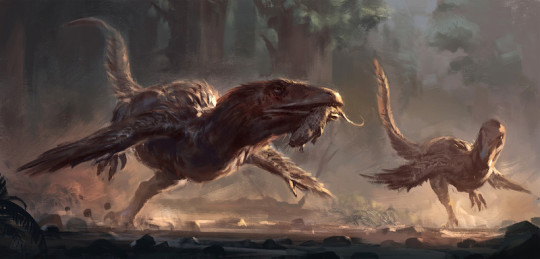
Deinonychus catch, Raph Herrera Lomotan
Studies of coprolites (fossil poo) and fossilised stomach remains in young dinosaurs have revealed it may have worked out differently. Young Deinonychus have been found to have different nutrients in their diets to adults, and palaeontolgists think this is because they hunted different animals (Frederick et al 2020). Adult Deinonychus had the power and skill to kill dinosaurs larger than themselves, but juveniles could not, so would've pursued smaller reptiles, mammals, or even invertebrates. Adults didn't share their kills with their young, so they had to find their own food.
This ontogenetic (relating to aging and development) variation in niches has also been theorised in larger theropods, to the point where some smaller to medium-sized dinosaur species have been identified as potential juveniles of larger species. Nanotyrannus was a species of smaller Tyrannosaur that has a very different body shape compared to the largest of the group. It had been described as about as tall as an adult human, with long slender legs, and had an extensive covering of feathers. But new studies have discussed the possibilities of Nanotyrannus being the juvenile form of Tyrannosaurus rex itself.
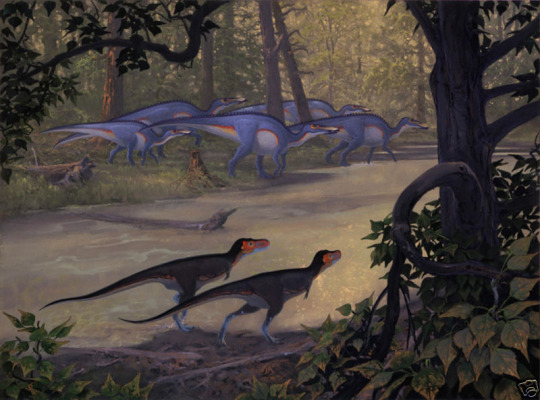
Nanotyrannus stalking Anatotitan, Doug Henderson
If this was the case, as many palaeontologists are on board with, it means that young Tyrannosauruses were specialised for a very different lifestyle than their adult counterparts. The juveniles were pursuit predators, running after smaller prey items, whereas the adults would take on larger dinosaurs, and did not have nearly enough leg strength to run for longer distances.
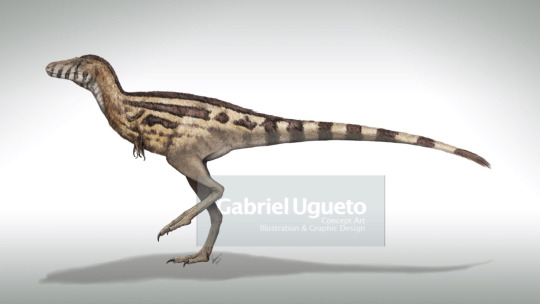
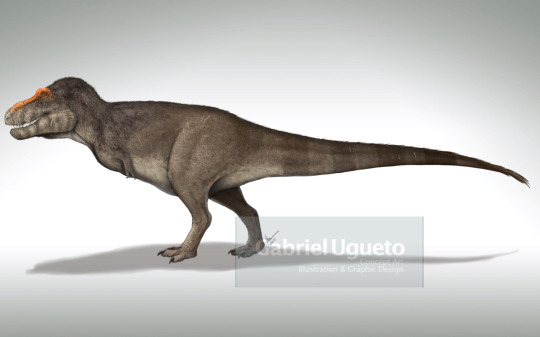
Juvenile/Adult Tyrannosaurus, Gabriel Ugueto
Scipionyx, the first dinosaur species discovered from Italy, has also theorised to be the juvenile of a larger species. It was initially classified as part of the group Compsagnathidae, but palaeontologists have begun to question whether the group itself is natural, or if scientists have just grouped together unrelated species of the same body shape and size. Given the shape and plasticity of its bones, the known specimen of Scipionyx is thought to be a hatchling, but a hatchling of what? Italian Paleaontologist Andre Cau theorised (Cau 2021 (its in Italian)) that Scipionyx was a juvenile Carcharadontosaurid, and further, that most of the Compsagnathid group consists of juveniles of large bodied theropods. The "Compsagnathid" body shape could in fact just be the body shape of juvenile Tetanurans (the clade including most theropods).
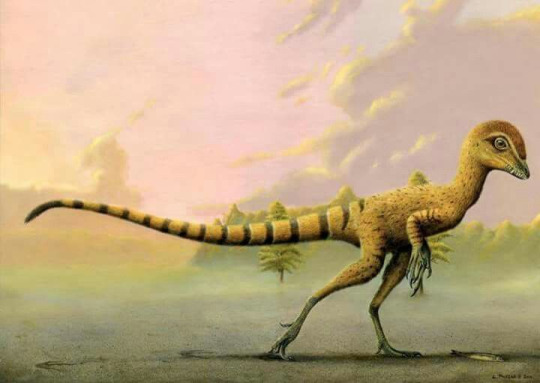
Scipionyx, Lukas Panzarin
This type of ontogenetic niche partitioning exists today in some reptile groups, particularly in Komodo Dragons, where the juveniles are aboreal insectivores, and the adults hunt mammals many times larger than themselves.

Juvenile Komodo Dragon, Mark Ralston
Dinosaurs were not mammals, and in fact are unlike many other groups alive today, and understanding their biology and behaviour requires looking into many different vertebrate groups. So, to answer the question posed by this post's title? Where are all the medium sized theropods? Its likely they're the bigger ones going through a phase.
Cheers for the read.
744 notes
·
View notes
Note
I’ve had a sucky week. I know you might not see this for a while but can I please have some weird animal facts when you get a chance to answer? :]
I’m sorry your week sucked, have some TURTLES.
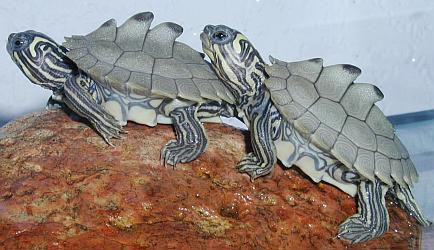
Behold: one of nature’s best examples of min-maxing.
Armor plating isn’t uncommon in vertebrates. Pangolins, ankylosaurus, armadillos, and placoderms all share similar stat allocation to name a few.
Some, like pangolins, just throw all the keratin they can into their skin and end up with tough scales. That’s the same stuff fingernails and hair are made of, and also the stuff that makes our skin waterproof. Others, like ankylosaurs, also grow little bits of bone into their skin. A bunch do both. These are common, efficient, easy-to-evolve traits that occur multiple times in history.
Turtles said fuck all that.
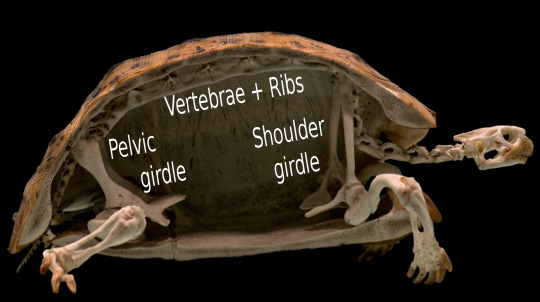
I’m doing it my way.
(Well not ALL that, they do still have keratinized scaly skin on their limbs, but still)
They took their rib cage, sternum and spinal column- you know, things that normally go inside your body, and put ‘em on the outside instead. Shoulder blades and hip bones grow inside the rib cage, too. Then, as if that wasn’t enough, they covered the whole deal in keratin scales. Some turtles even have a hinge on their belly (plastron) that lets them close up completely. I promise, there’s a turtle in there.
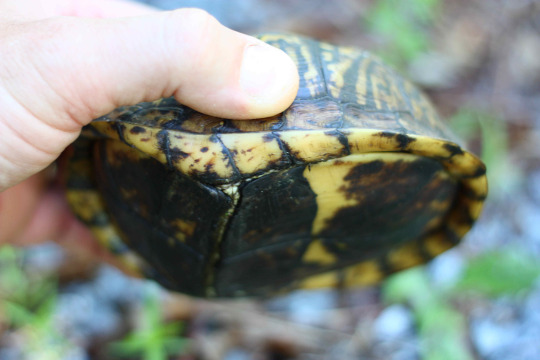
What could go wrong reverse-engineering an exoskeleton onto a vertebrate?
Turns out, a lot.
Take a nice deep breath in, and exhale it out. Can you feel your ribs move? Feel them expand and contract, working with your diaphragm muscles to pull large quantities of air into your body?
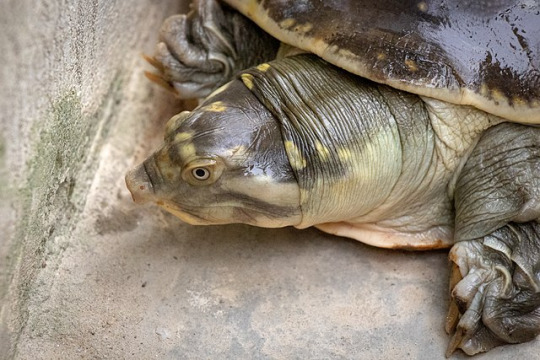
Show-off.
Yeah, when all your ribs are fused into one big dome it turns out you lose a lot of lung function. The good news? With your body fully enclosed and stabilized in bone, it’s not like your abs and obliques are doing anything now. Might as well put them to work pumping your lungs. Except, not directly. Some muscles pull on the liver, which attaches to the right lung. Other muscles pull on the stomach, which pulls on the left lung. It’s pretty inefficient all around, so you may not get enough oxygen exchange to be a marathon runner, but as long as you don’t have to worry about predators you know what they say about slow and steady.
However that’s not always enough. What if, say, you did have to worry about predators a little. What if, hypothetically, you took a few points away from pure defense and gained a little more swim speed and mobility? You, like many semi-aquatic turtles, would need a backup source of oxygen. A breathing plan B.
In turtles, plan “B” stands for Butt. Some turtles (lots of freshwater semi-aquatic ones) can pump water in and out of their cloaca, which is sometimes enlarged and lined with specialized membranes that maximize surface area for gas exchange. Basically, improving any part of this fucked-up breathing apparatus is so difficult that it’s evolutionarily better to evolve proto-gills in the ass.
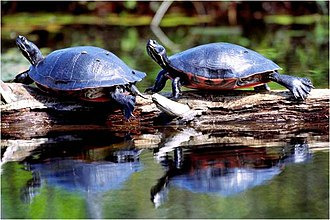
I was going to make a different joke here but these turtles are literally called “Northern Red-Bellied Cooters” and I really can’t top that
Turtles are cold-blooded, which of course means they don’t do shit in the winter. Turtles who are unfortunate enough to live in places that get winters bury themselves in the mud in a type of hibernation called ‘brumation’. You may wonder, how do they breathe THEN?
Easy, they don’t. They slow down their metabolism a crazy amount and spend the winter months doing anaerobic respiration. We can do this too, it’s why your muscles burn after working out. If your body doesn’t get oxygen, your cells can still burn fuel much less efficiently and produce a lot of lactic acid as a byproduct. Turtles can counteract the extreme acidity, buffering it and sequestering it with the bone in their shell. Literally, they leach calcium and magnesium out of their bones to prevent their acidic blood from killing them over the winter.

Just waking up from the winter, chock-full of acid and ready to snap.
The most infuriating thing, personally, is that all of this bullshit min-maxing works. Turtles are the longest-lived land vertebrates. The oldest recorded one lived to 187. There’s a little box turtle at my workplace that’s almost 90. This isn’t a glass cannon like a horse is, this janky tank build WORKS.
10K notes
·
View notes
Text
This phenomenon is called evolutionary anachronism, and it’s absolutely fascinating. Another interesting example is the prickly pear -- they grow long thorns entirely out of proportion to any creature that can graze on them, and produce clusters of rich, nutritious fruit that are clearly meant to be eaten... except that they don’t drop when ripe and remain nested among the thorns, out of reach of potential dispersers. They reproduce mostly by growing new plants from fallen pads.
It turns out that prickly pears most likely evolved alongside the extinct American camels -- when modern camels were brought to the US as an army experiment in training desert troops they went nuts for their fruit, and the spines proved barely adequate for keeping them away from the rest of the plant. Feral dromedaries in Australia are also the only things that will graze on feral prickly pears, and are also quite happy to eat their fruit as well.
just learned that magnolias are so old that they’re pollinated by beetles because they existed before bees
361K notes
·
View notes
Note
why are cheetahs not technically big cats? is it just because they're weird as hell or do they not meet some big cat criteria?
so the thing about Big Cats is that they’re all closely related members of the genus Panthera!

because they’re all part of the same lineage, they share a lot of traits like the ability to roar.
and cheetahs are actually members of a completely different cat lineage altogether, the genus Acinonyx!
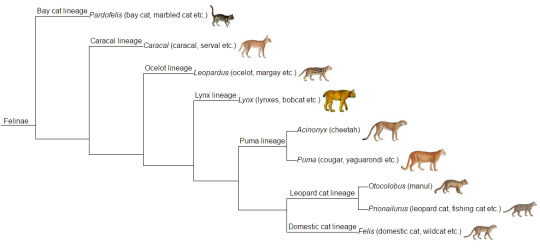
they’re not very closely related to the big cats at all and are actually most closely related to Pumas, which you can totally see if you stack them up next to each other and squint really hard.
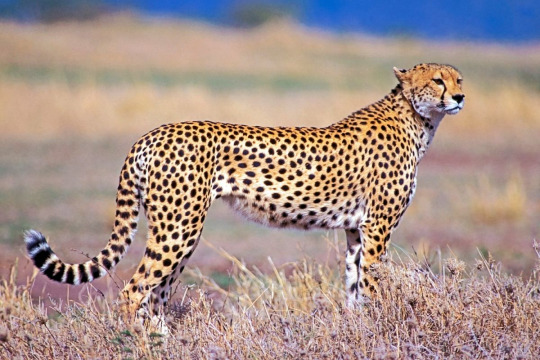
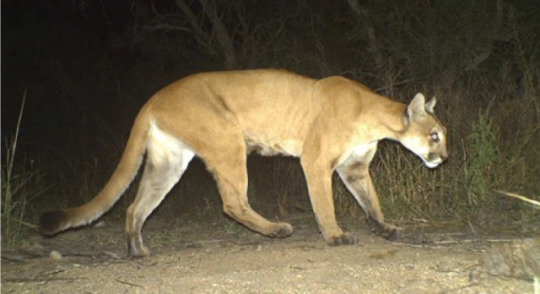
it’s okay though, the cheetah can still be the biggest cat in our hearts :’)
37K notes
·
View notes